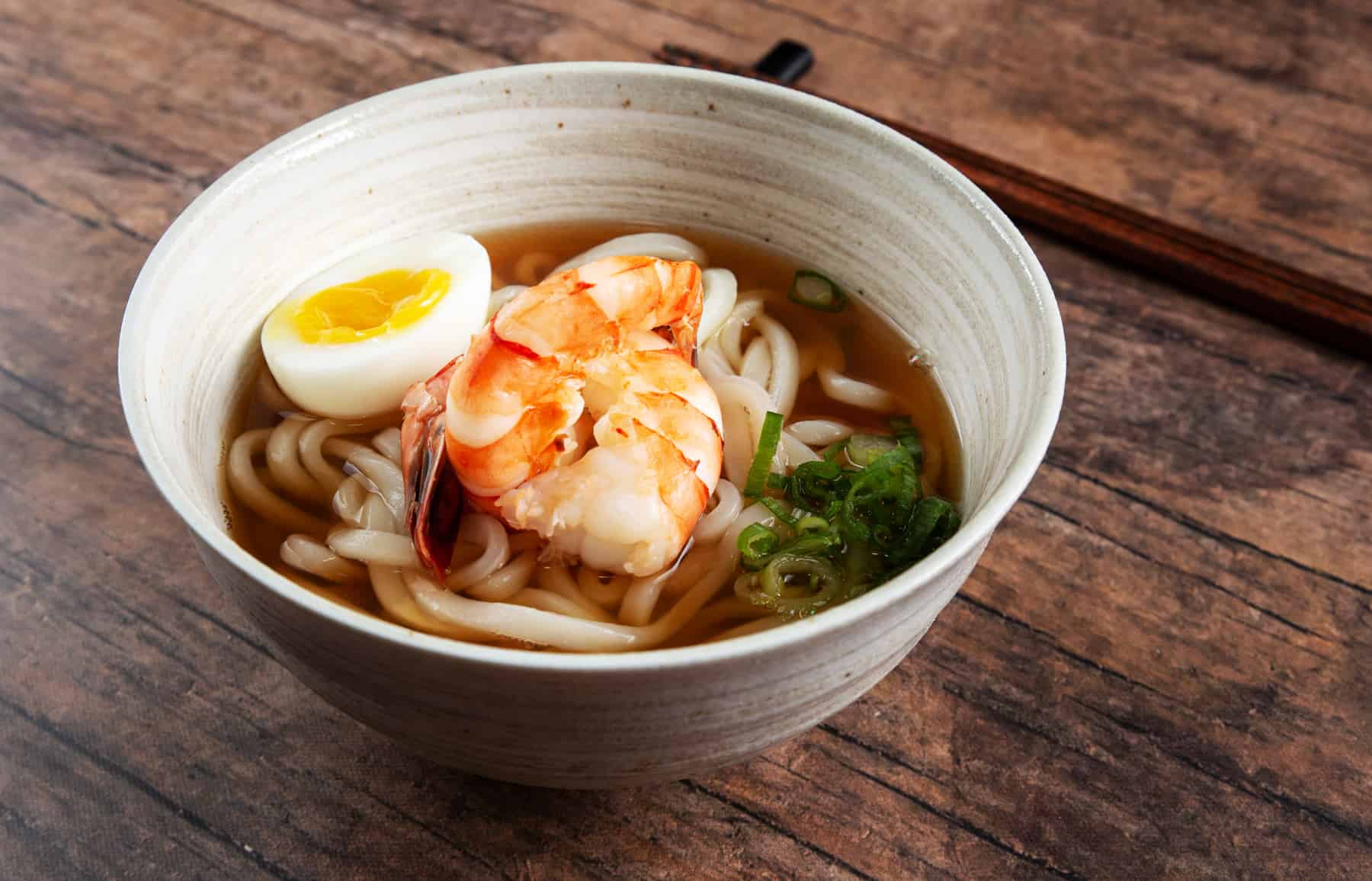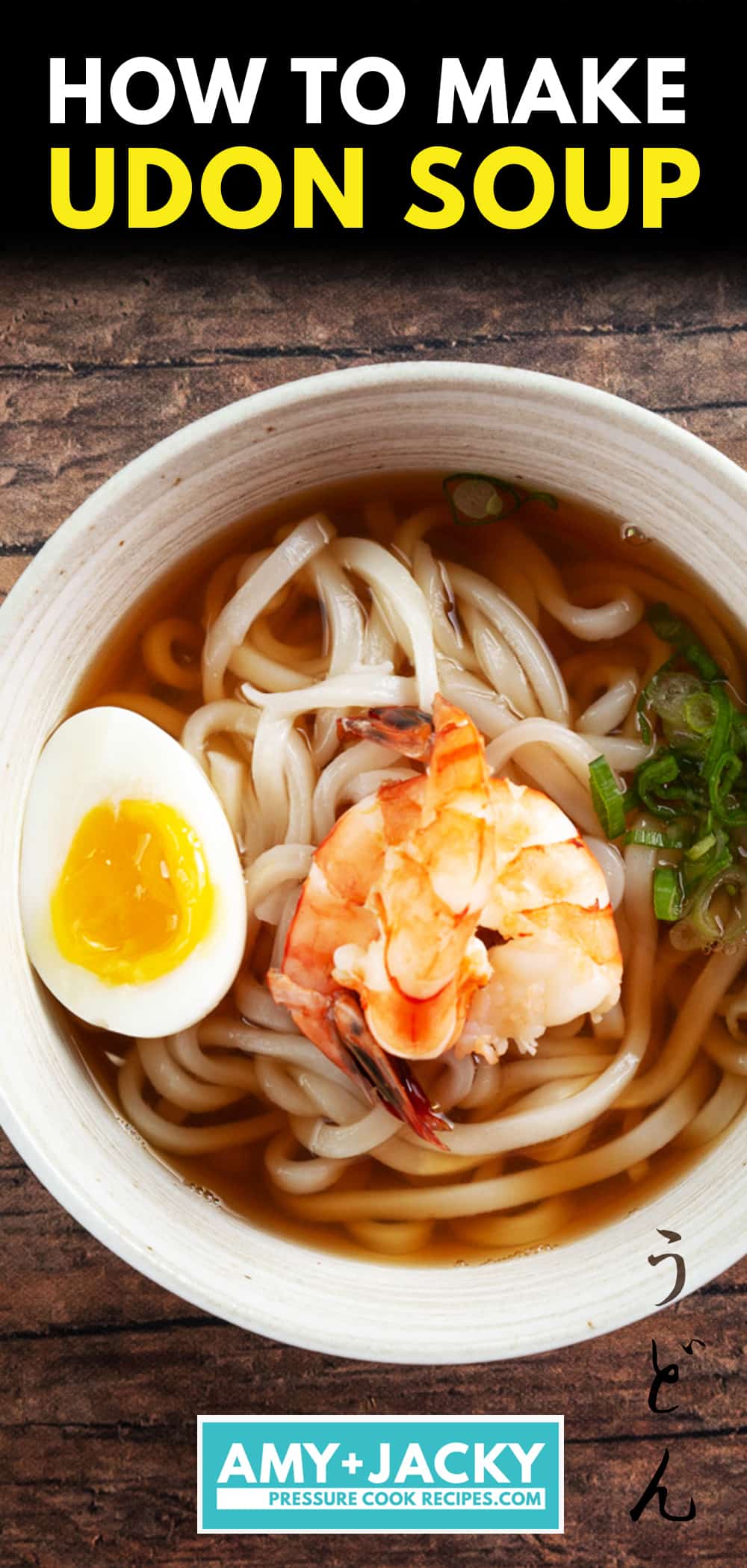Learn how to make Udon Soup (うどん)! Easy to make this popular simple Japanese noodle soup with few ingredients. Slippery al dente udon noodles with a satisfying chewy bite in a comforting, light, and well-balanced savory broth.
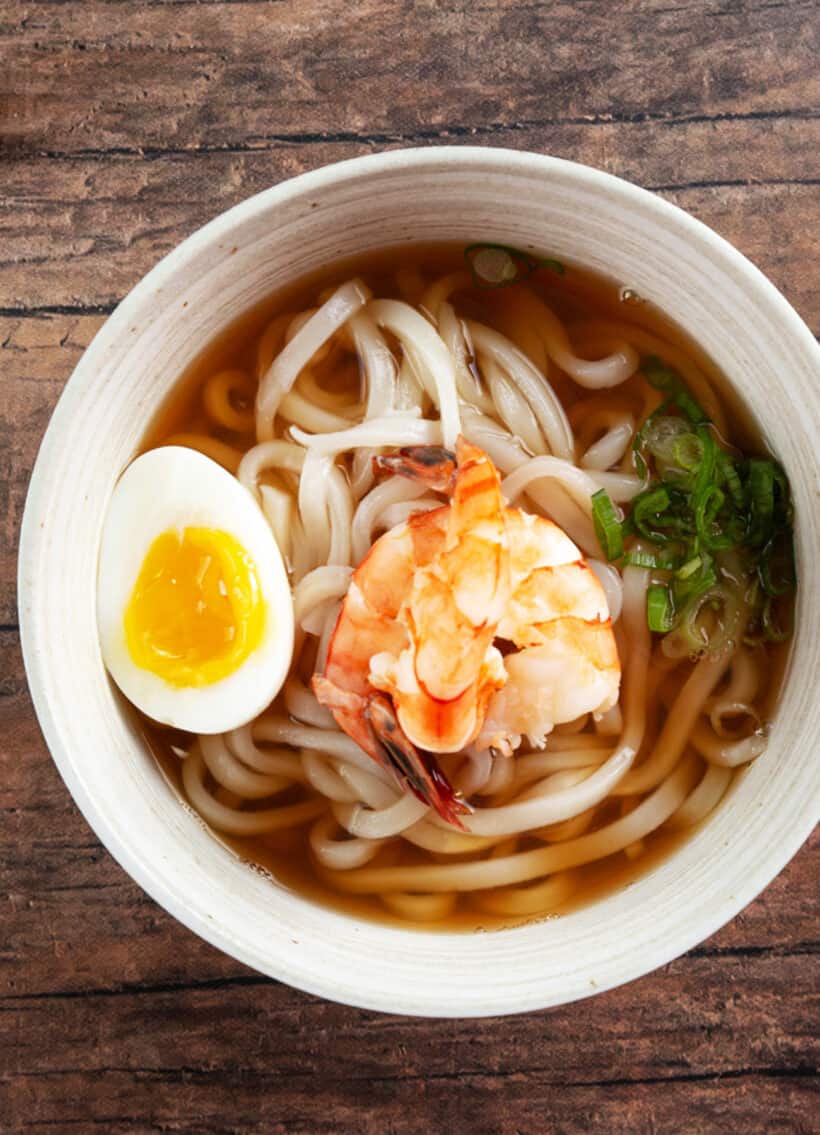
What is Udon?
Udon (Japanese: うどん) is a type of wheat flour noodles. It’s usually white, thick, chewy, slippery, with a mild flavor.
Udon noodles is one of the most popular noodles in Japanese cuisine! And there are many ways to prepare and serve this delicious comfort food.
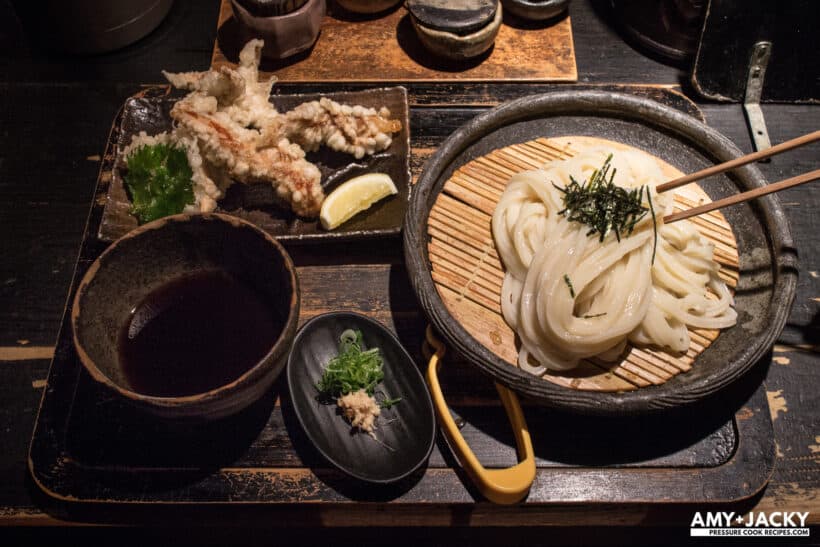
Udon Types
There are a variety of udon noodles that come in different thickness, shapes, and texture.
Udon noodles are mostly thick, but there are also thinner varieties. The texture can be firm or soft. And the shape can be flat and wide or square-shaped.
One of the most popular and well-loved udon noodles is Sanuki Udon (Japanese: 讃岐うどん). They’re thick, square-shaped with flat edges, and have a chewy elastic texture.
Manufacturers sell udon noodles in different forms and packaging. Such as fresh udon, dried udon, frozen udon, fully cooked udon, instant udon, and cup udon noodles. It’s important to note that different types need different cooking times.
*Note: For this udon soup recipe, make sure you’re using frozen udon noodles. You’ll find them in the supermarket’s freezer section.
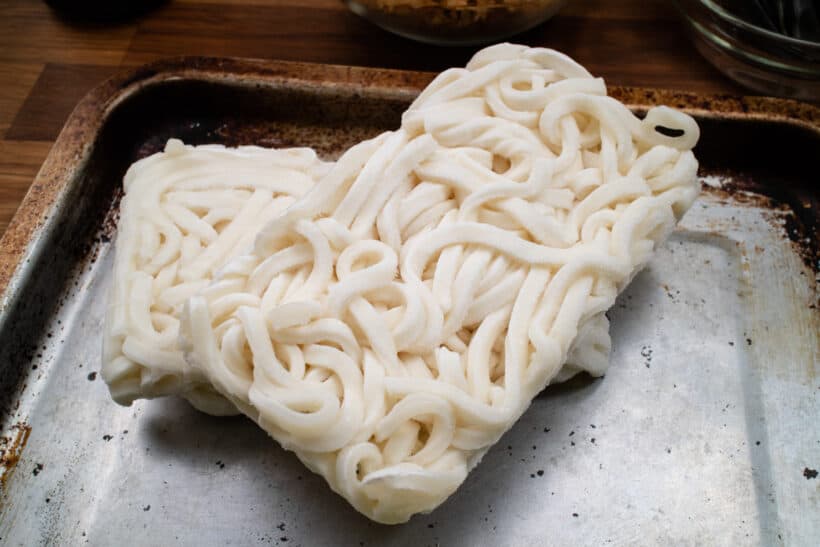
How to Serve Udon
You can serve udon noodles cold or warm, in soup or broth, with sauce and toppings, with dipping sauce, or stir-fried.
Udon can be eaten any time of the day including breakfast or brunch. You can serve udon as a side dish or main dish in a meal.
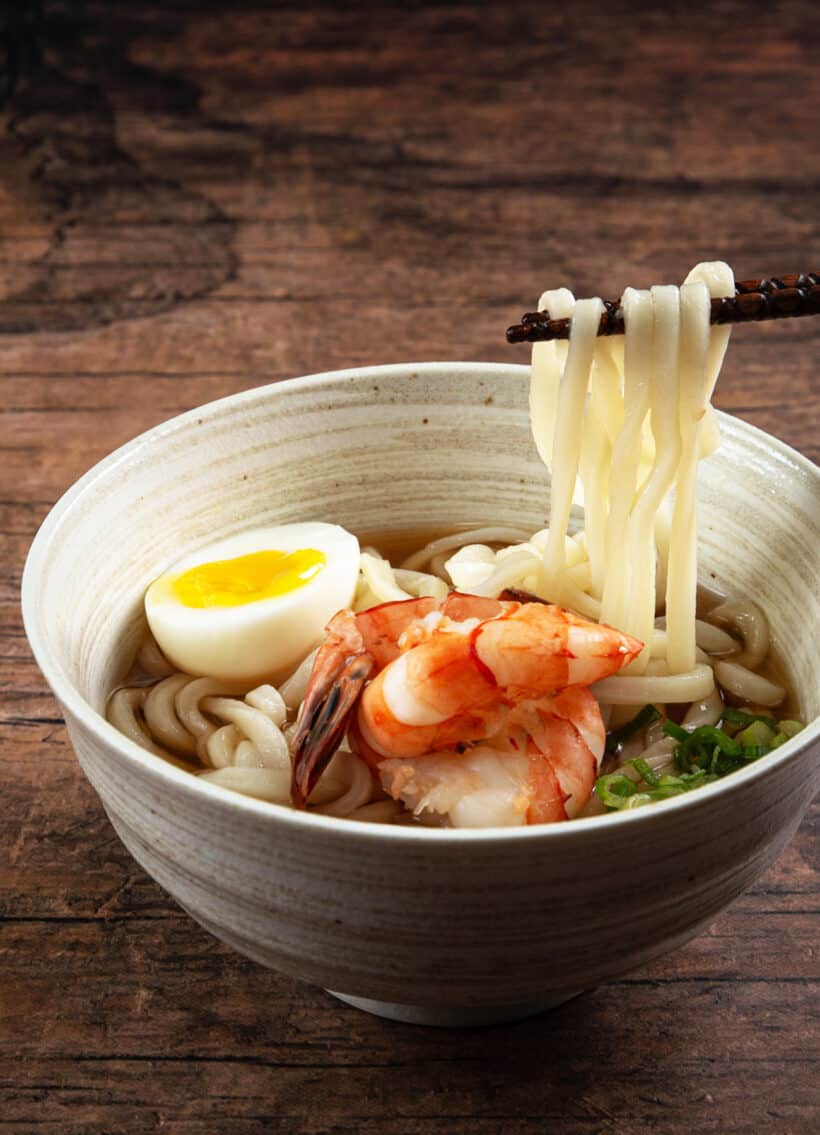
Soba vs Udon vs Ramen
Ramen, Soba, and Udon are three of the most popular noodle types in Japanese cuisine.
Ramen (Japanese: ラーメン, 拉麺): Ramen is mostly made with wheat. They vary in thickness, but ramen is usually thinner than udon. Ramen’s color can range from white to yellow. The texture is al dente and chew to the bite.
Soba (Japanese: そば, 蕎麦): Soba is made mostly with buckwheat, hence the nutty flavors. The color is usually a distinctive brownish-gray. Soba is thin, softer, less elastic texture than ramen and udon.
Udon (Japanese: うどん): Udon is made with wheat. It’s white, with mild flavors. Depending on the variety, it’s usually thick, chewy, firm or soft, flat or square-shaped.
Step-by-Step Guide: Udon Soup
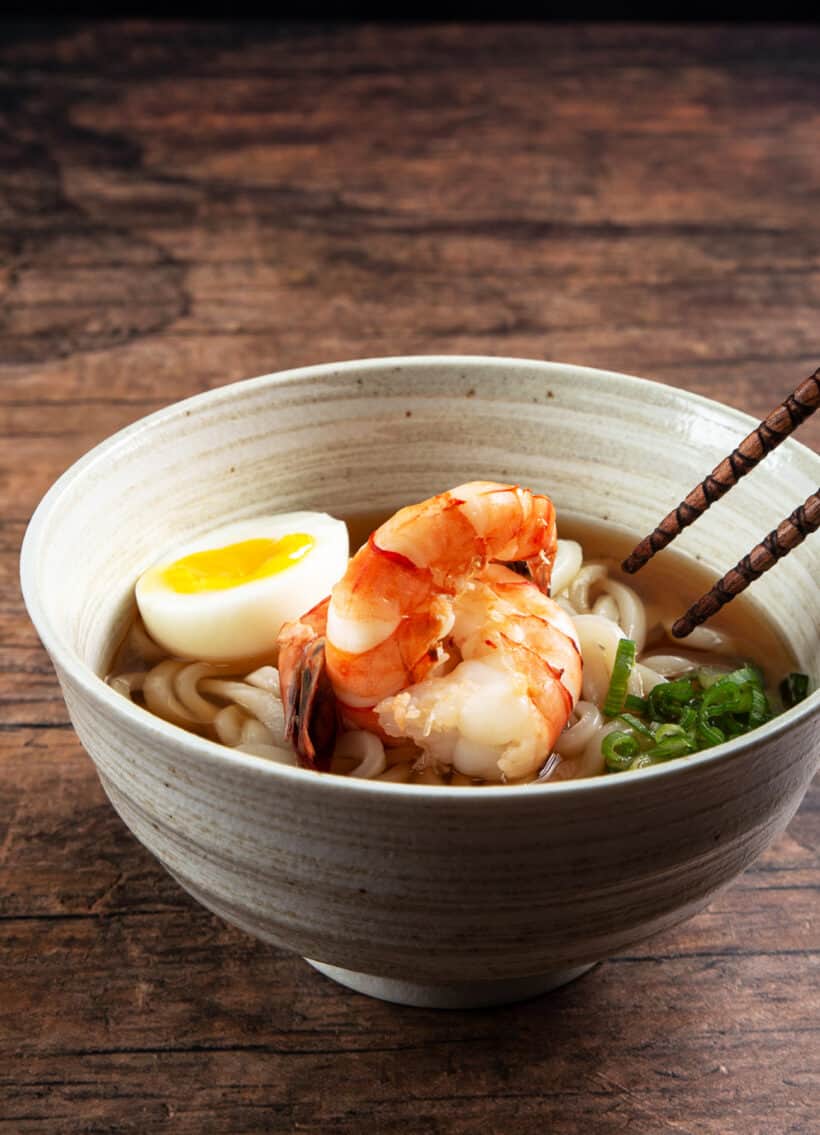
How to Make Udon Soup
Ease Level – Super Easy: You can make authentic Japanese udon soup with basic cooking skills, kitchen tools, and Japanese pantry ingredients.
Cooking Time: You can easily make this comforting udon soup in just 15 minutes!
Flavors: This udon soup recipe yields a light, well-balanced, fresh, savory, dashi shrimp broth.
Texture: When cooked properly, the thick udon noodles are chewy, al dente, and slippery. Depending on the type of udon noodles you use, they can be firm or soft.
Tools for Udon Recipe
You only need basic cooking tools to make this udon noodle soup. If you like, you can use an Instant Pot instead of a regular pot on the stove.
Noodle Strainer
For cooking any type of noodles, we love to use a Stainless Steel Mesh Noodle Strainer.
This strainer helps control the cooking time and easily strain the noodles. It’s a very convenient kitchen tool!
With this strainer, you can easily avoid overcooking the noodles. Also, you can shake out the excess liquid and prevent the water from diluting your broth’s flavors.
Prepare Udon Recipe Ingredients
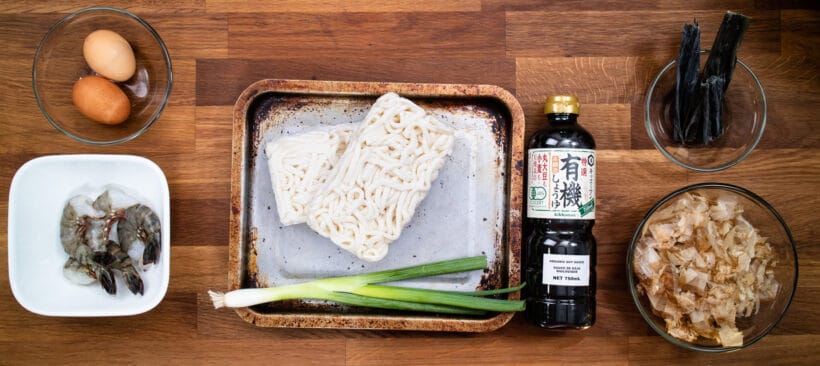
Soy Sauce
Kikkoman Organic Soy Sauce is an excellent choice for this udon recipe. This soy sauce may taste stronger than your usual soy sauce. Please remember to adjust it to your taste.
*Important Note: Different brands or bottles of soy sauce (same brand) can vary in their sodium levels, tartness, aroma, texture, and taste. As always, make sure to taste & adjust the amount accordingly.
Shrimp
For reference, we used 16/20 headless tiger prawns.
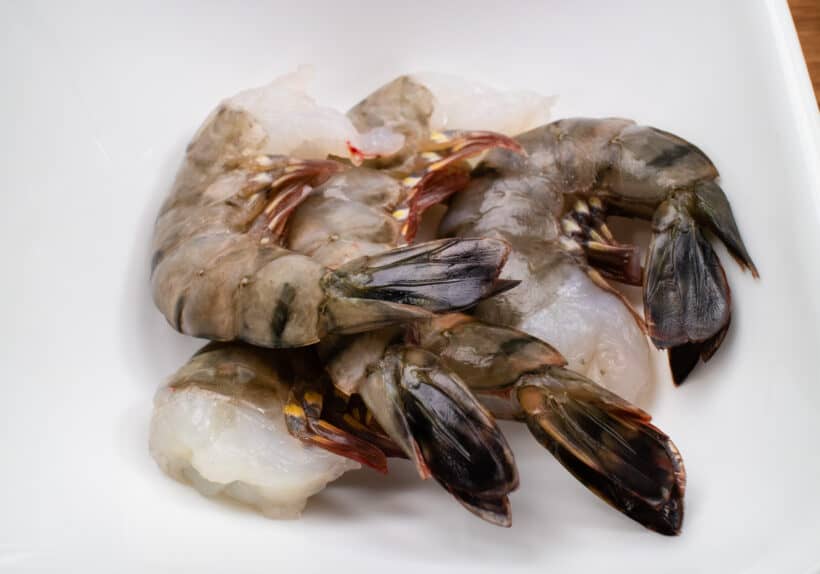
Simply peel and devein the shrimp.
*Pro Tip: Don’t throw away the shrimp shells! We’ll add them to the dashi to give the broth a little extra flavor boost.
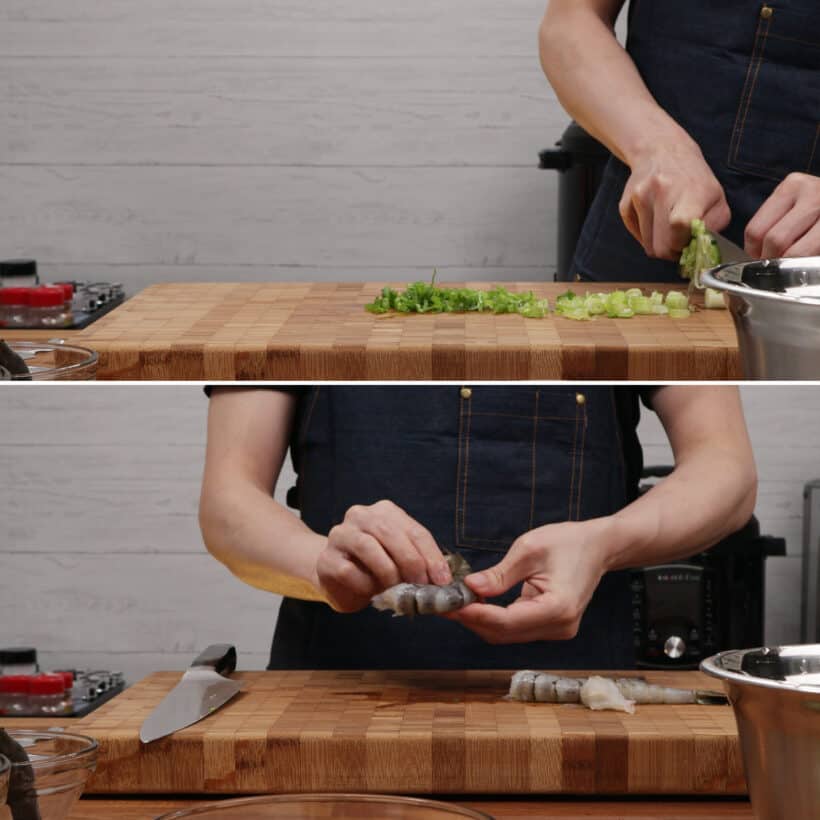
Green Onion
Finely slice the green onions. We’ll use them to garnish the udon soup.
Dashi Stock
Homemade Dashi: It’s very easy to make homemade dashi with this dashi recipe. It definitely tastes better than instant dashi!
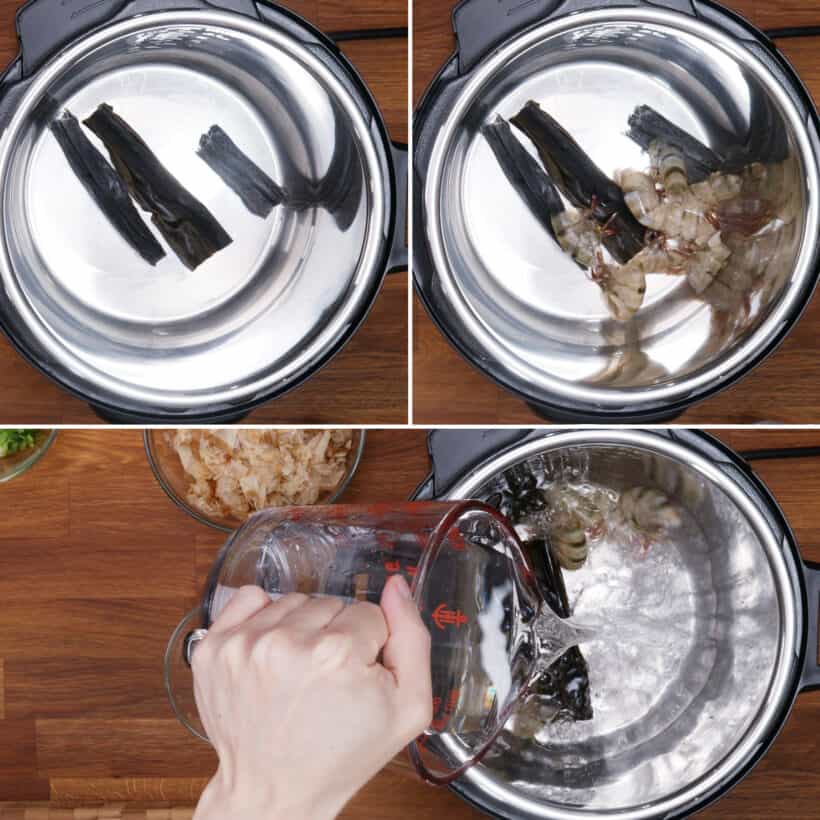
Substitute with Instant Dashi
If you don’t have time to make dashi from scratch, you can use instant dashi to make the dashi stock.
Mix 6g dashi powder (HonDashi) with 4 cups (1L) of water.
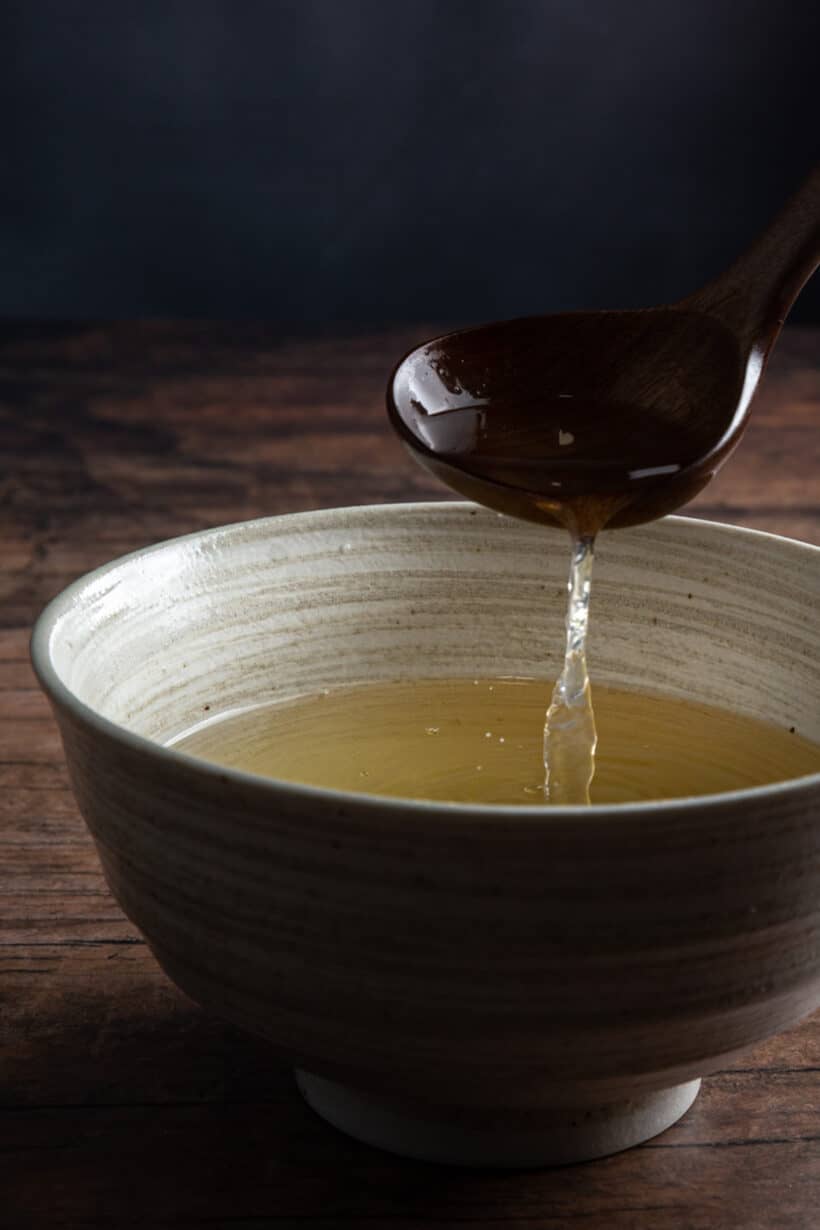
Cook Shrimp in Dashi
Adding Shrimp Shells
1) If You’re Using Homemade Dashi: Add in the shrimp shells with the kombu.
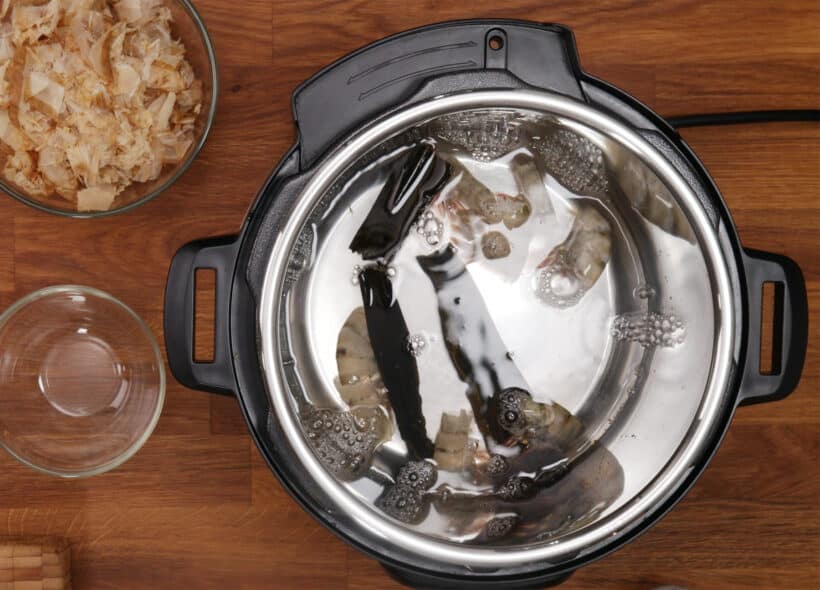
2) If You’re Using Instant Dashi: Add in the shrimp shells with the shrimp.
First, bring the dashi stock to a bare simmer.
Then, cook the shrimp in dashi stock until they’re fully cooked.
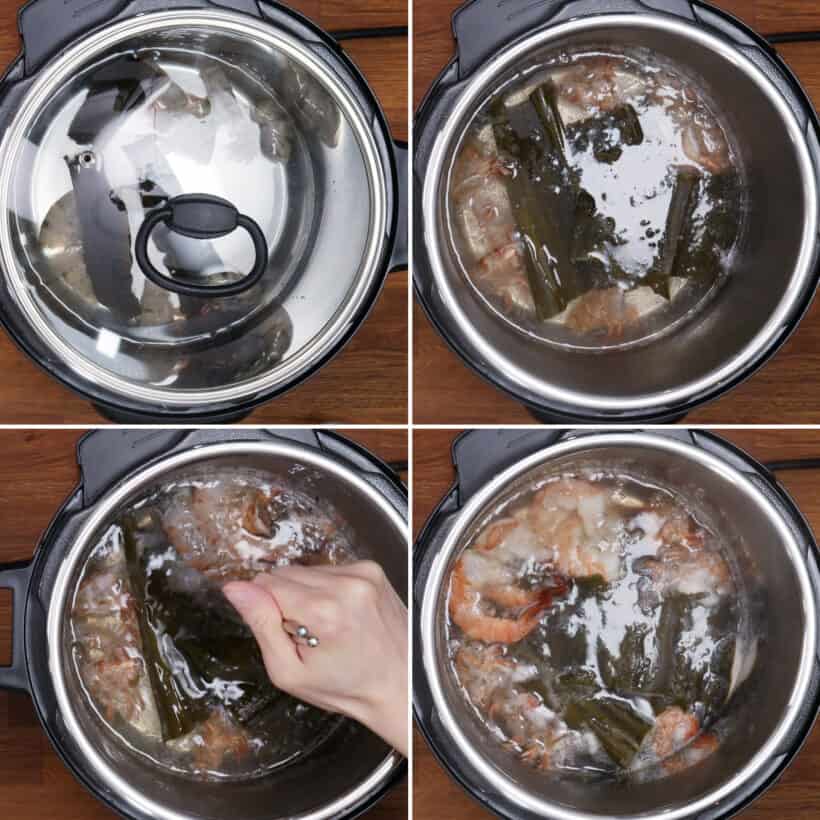
*Note: 16/20 extra jumbo shrimp take roughly 4 to 5 minutes to cook in the dashi.
Set aside the shrimp once they’re fully cooked.
Cook Soft Boiled Eggs
First, bring 7 cups (1750ml) of cold water to a full boil in a pot.
*Note: We’re using this pot of water to cook the eggs and frozen udon.
For Soft-Boiled Eggs: Boil eggs in the water for 5.5 to 6 minutes.
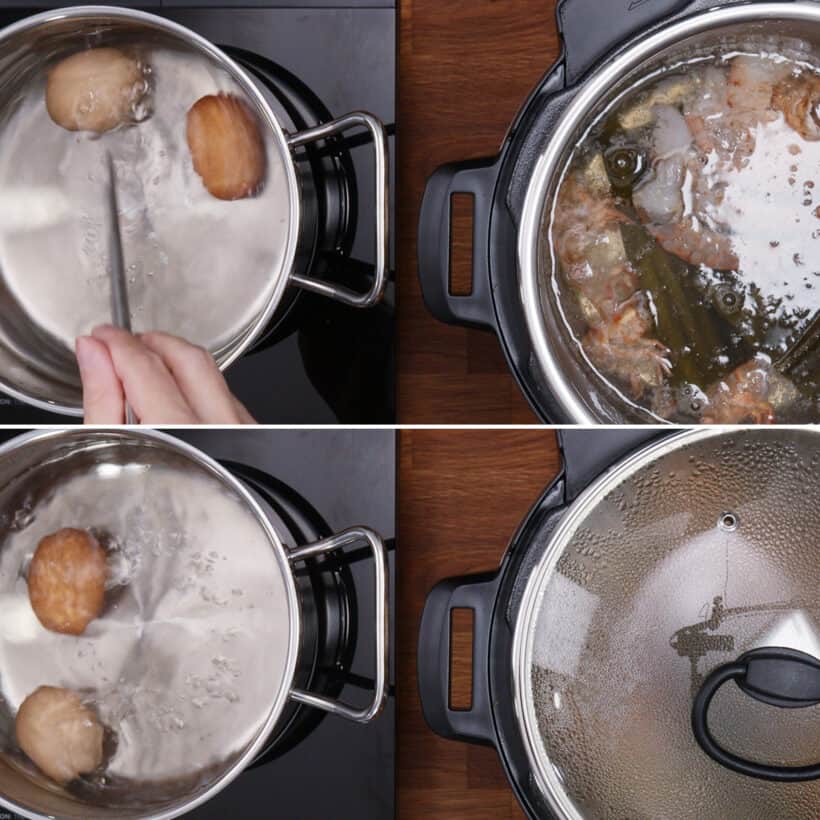
Drain & place eggs in ice-cold water to stop the residual heat from further cooking them.
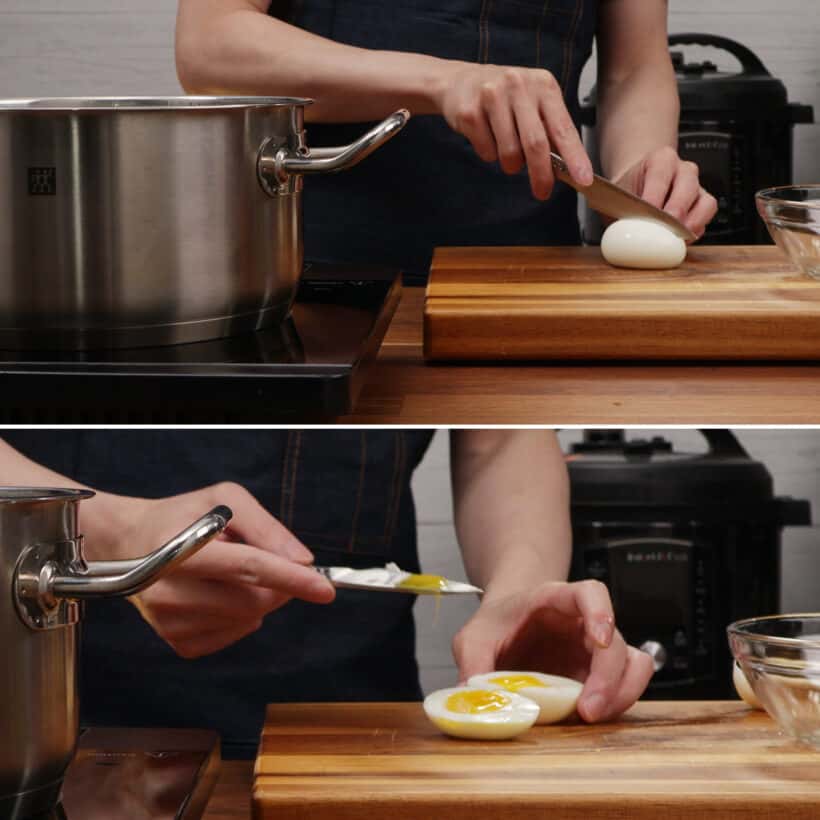
Season Dashi Broth
Add 2 to 2½ tbsp (30ml – 37.5ml) Japanese soy sauce to your dashi broth. Please don’t add them all at once!
*Instant Dashi Tip: If you’re using Instant dashi, you may need to add less soy sauce. Please taste and adjust accordingly.
*Pro Tip: Aim to have a slightly more salty dashi broth because the udon noodles will dilute the saltiness a bit.
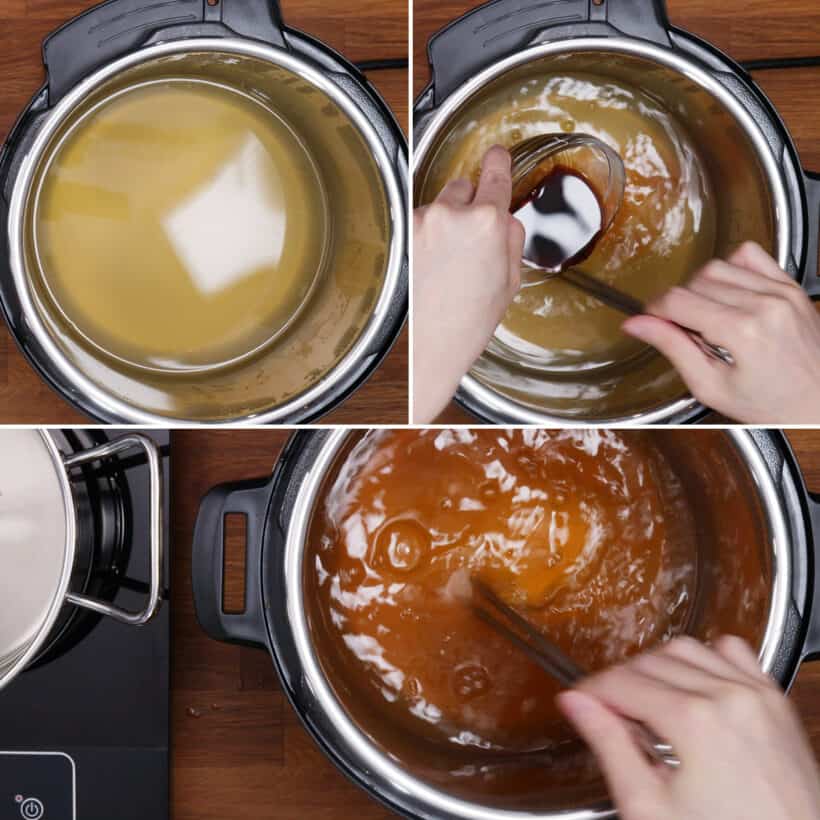
Now, mix and bring your soy sauce dashi broth to a full boil.
*Note: If you’re using the Instant Pot to make your dashi broth, use the “Saute” button.
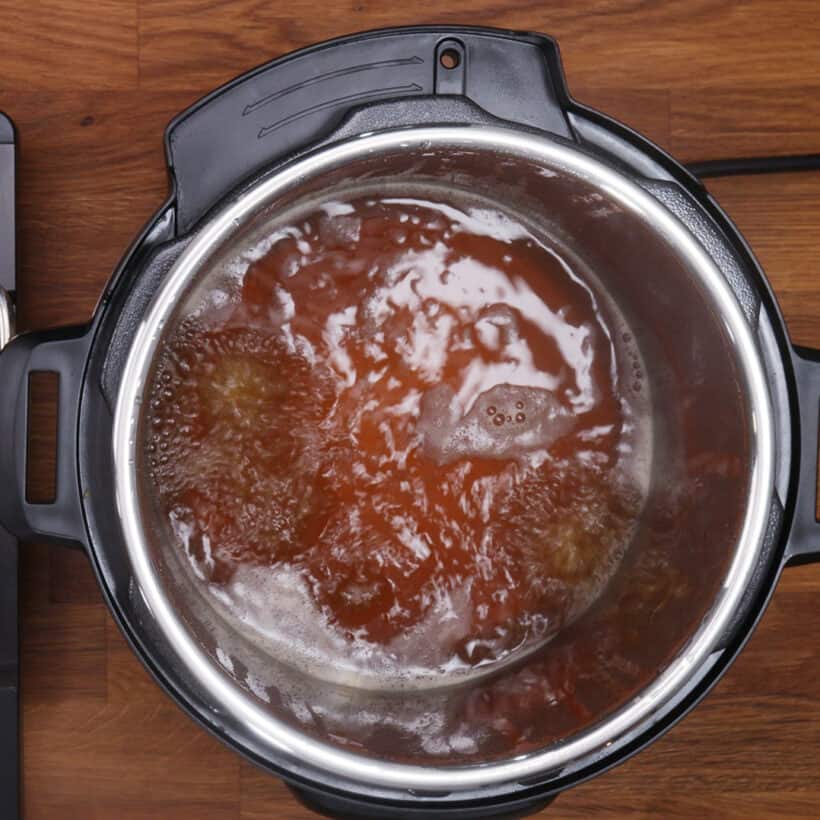
Cook Frozen Udon
First, place the frozen udon noodles in your pot of boiling water.
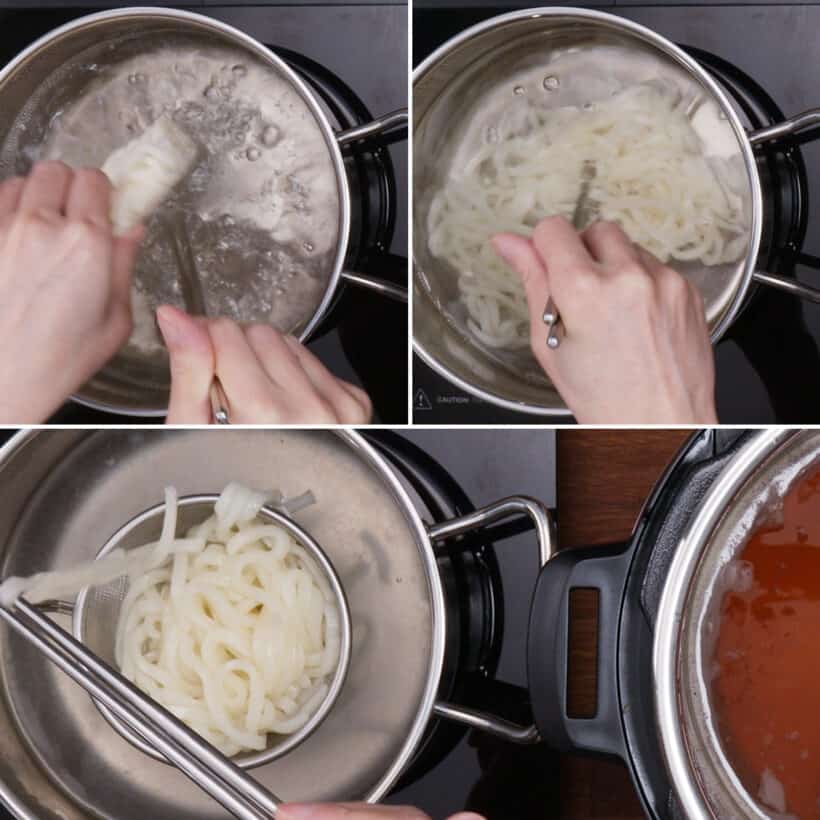
*Pro Tip: Frozen udon cooks extremely quickly. It’ll take roughly 40 seconds to 1 minute to cook.
*Pro Tip: It’s extra helpful to use a Stainless Steel Mesh Noodle Strainer to cook udon! With a noodle strainer, you can easily scoop up the frozen udon, then give it a few shakes. This helps prevent soggy noodles and lets you drain them well.
Once cooked, remove udon from the water immediately.
Then, drain well and place the udon in a serving bowl.
Serve Udon Soup
Now, place cooked shrimp and soft-boiled eggs on top of the udon noodles.
Then, garnish with finely sliced green onions.
Lastly, add 2 cups (500ml) of hot dashi udon broth to your udon noodles.
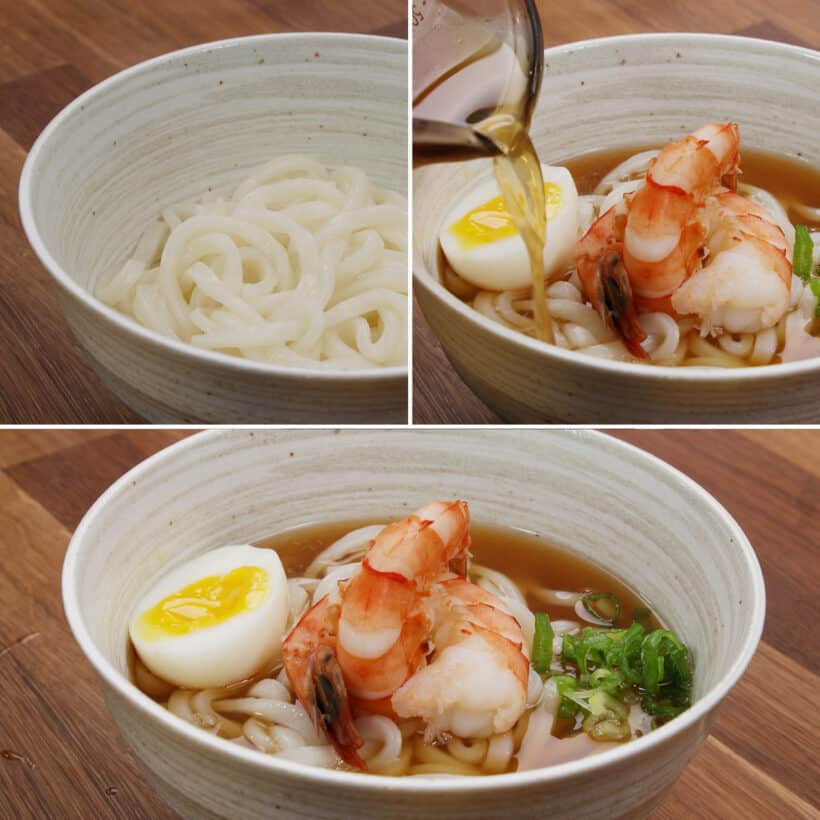
Serve hot udon noodles soup immediately!
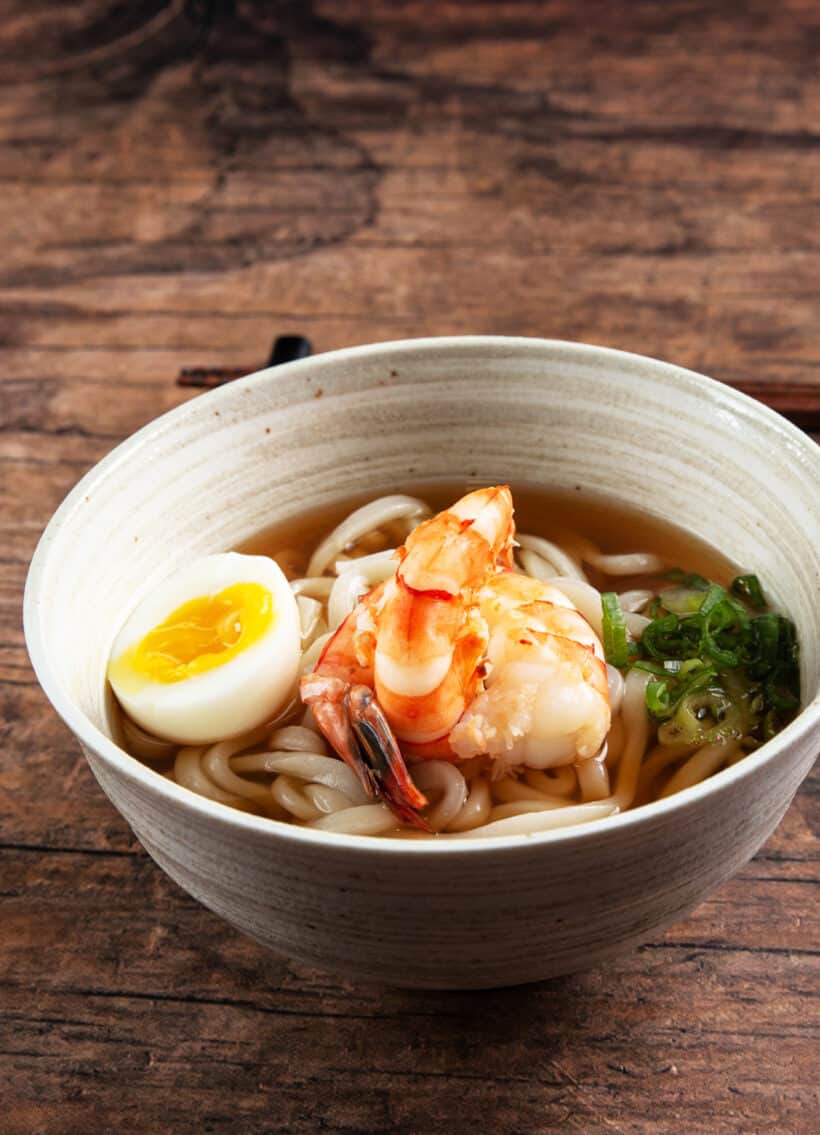
What to Serve with Udon
There are a variety of toppings, side dishes, main dishes you can add or serve with your udon soup.
Most Popular Udon Toppings
The most popular udon toppings or seasoning include tempura, mochi rice cakes, kakiage (tempura bits), abura-age (fried tofu), kamaboko (Japanese fish cake), egg, butter, mentaiko (fish roe), nori seaweed, or shichimi spice.
Enjoy your comforting Udon Soup!
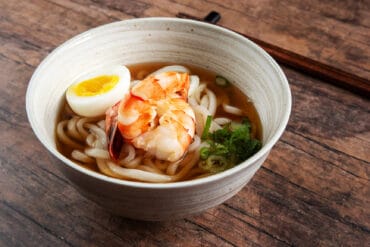
Udon Soup
Ingredients
- 2 frozen udon
- 4 - 6 “16/20” jumbo shrimp , peeled and deveined
- 2 - 2½ tablespoons (30ml - 37.5ml) Japanese soy sauce (adjust accordingly)
Homemade Dashi
- 1 liter (4 cups) cold water
- 2 pieces (12g) dried kombu
- 15 grams dried bonito flakes
Garnish & Topping
- 1 stalk green onion , thinly sliced
- Large eggs (optional)
Equipment
♥ Share this Recipe so We can create more yummy recipes for you. Thank you 🙂
Instructions
- Prepare Ingredients:Shrimp: We used 16/20 headless tiger prawns. Peel and devein the shrimp.*Pro Tip: Don't throw away the shrimp shells! We'll add them to the dashi to give the broth a little extra flavor boost.Dashi Stock: For Homemade Dashi: make dashi stock with this dashi recipeFor Instant Dashi: Mix 6g dashi powder (HonDashi) with 4 cups (1L) of water.
- Cook Shrimp in Dashi: Bring the dashi stock to a bare simmer. Cook the shrimp in dashi stock until they're fully cooked. Set aside the shrimp once they're fully cooked.*Note: 16/20 extra-jumbo shrimp take roughly 4 to 5 minutes to cook in the dashi.*When to Add Shrimp Shells: If Using Homemade Dashi: Add in shrimp shells with kombu.If Using Instant Dashi: Add in shrimp shells with shrimp.
- Cook Soft Boiled Eggs: Bring 7 cups (1750ml) of cold water to a full boil in a pot. Boil the eggs in boiling water for 5.5 to 6 minutes. Drain & place eggs in ice-cold water to stop the residual heat from further cooking them.
- Season Dashi Broth: Add 2 to 2½ tbsp (30ml - 37.5ml) Japanese soy sauce to your dashi broth. Please don't add them all at once! Mix and bring your soy sauce dashi broth to a full boil. *Note: If you're using the Instant Pot, use the "Saute" button.*Pro Tip: Aim to have a slightly more salty dashi broth because the udon noodles will dilute the saltiness a bit. If you're using Instant dashi, use less soy sauce. Please taste and adjust accordingly.
- Cook Frozen Udon: Place the frozen udon noodles in your pot of boiling water. Cook for roughly 40 seconds to 1 minute. Once cooked, remove udon from the water immediately. Drain well and place udon in a serving bowl.
- Serve: Place cooked shrimp and soft-boiled eggs on top of the udon. Garnish with finely sliced green onions. Add 2 cups (500ml) of udon broth to your udon noodles. Serve hot udon noodles soup immediately!
Notes
Nutrition
All Our Pressure Cooker Recipes
*Disclosure: We are an Amazon Influencer/Amazon Associate. This means that if you decide to purchase items or services on Amazon through our links on Pressure Cook Recipes to Amazon, Amazon will send a small commission to us at no additional costs to you. Thank you!
